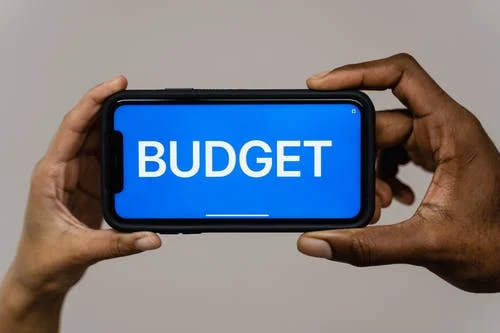We talk a lot on this website about living below your means and I realize the statement can be open to interpretation or even confusion.
When I talk to thrifty people, they say a lot about buying things on sale, paying off card balances every month, driving a five-year-old car and the like, often ending with “I don’t have any loan and card balances because I live within my means.”
Living within your means
I get what they are saying, they are responsible. But when I try to explain the difference between “living within one’s means” and “living below one’s means” they don’t always get me. Since stubborn is my middle name, I’ll take another shot at it.
Let’s assume I’m single with no children and take home $3,100 monthly after taxes, insurance, 401K and HSA.
After mortgage, utilities, car payments and insurance, (card payments for) groceries and monthly consumables there is $500 left. From this, $180 is allocated to entertainment and other discretionary spending. This leaves $220 in savings for periodic expenses like car maintenance.
When there is a major expense like a new stove coming up, I’ll cut back on groceries, entertainment and those discretionary items for a few months so the eventual stove purchase doesn’t sit on my card for months. I’m responsible because I don’t buy anything I can’t afford and I pay my card in full every month.
I’m living within my means. Living below my means is another matter.
Not because you can afford new means you have to get new right away.
Living below your means
It’s like the chicken and eggs scenario when you try to explain which comes first. So let’s just jump in to this month with the new way of doing things and see how it takes us along for the next decade.
For now, take-home pay remains the same.
First the mortgage, we are going to up the payment because the more we pay towards principal now, the less we pay in interest over time. Depending on how much we overpay, we can cut the mortgage by more than a few years.
How much is 3–5 years of your mortgage payments? One or two new cars, cash-purchased right? I have a family member who took fifteen years off his mortgage. He lived in an apartment without any furniture except a mattress, a fold up table and chair, two plates, two cups, two forks, two pots for seven years to save for the down payment, but his scenario is a bit extreme, even for me.
So, where does the extra mortgage money come from? Living below your means when it comes to groceries, monthly consumables, transportation, entertainment, and those discretionary items. Let’s look at a few ideas

Areas for change – Food & entertainment
Have you looked in your grocery cart lately? Influenced by those cute TV and phone ads, right? Pre-sliced, pre-chopped, prepared everything; serving size bottled water, green juice, fruit juice, energy drink.
If your means afford you ready-sized drinking fluids, then live below said means and get a juicer and package your own; and forget those make-a-meal-from-a-prepackaged-box that’s supposed to be saving you time. Time to do what—go out and spend money?
If you can afford to go out to dinner with friends every week, step down and invite them over once per month (movie night, dominoes), eat in twice (pizza night, salad feast), and then go out on the town once. Swap outside movies plus dinner for Netflix/Hulu/Prime binge watching plus tacos and wine.

Areas for change – Transportation
Let us look at the car. New car every how often? As soon as the last one is paid for it’s back on the car payments treadmill. Can afford it, right? But try living below your means, Buy a good car; not expensive, just good, reliable, and long-lasting. Remember, it’s transportation you’re after, not style.
Subscribe to Consumer Reports and start tracking the good stuff, then get one of their recommendations next time you go car buying. Follow the vehicle’s maintenance schedule and drive it for twice the financing period. If you miss making the car payments, put the money in a new-car fund.
I’m not paid by anyone for car endorsements so, that said, I have been driving Subarus for decades—three cars twelve years per car on average. The relative up top, he is on a Buick for fifteen years, same age as my current car. We are in a contest to see whose car will get to eighteen years. Both cars are well-maintained and lovingly look after, all of which cost less than buying a new car.
The point is, not because you can afford new means you have to get new right away. Live below your means for a while and save the car payment interest and use that to save on mortgage interest. Apply the same rational to your other expenditures and put aside that money to live how you please, with dignity, in your old age.
Areas for change – Income

Next, consider another income stream that will be viable into retirement. Nothing big at first like college-money income, more like hobby-expenses or vacation-size income, and then build it up over the years.
One friend is doing photography, another theme cakes, and another freelance journalism.
What could be ahead
Fast forward ten years into living below your means—no payments on a better car, mortgage almost gone, second income stream in place for retirement’s discretionary expenses, and some additional savings. No having to save for a new stove or refrigerator, the money is already there.
So, now that you’re here in this place of financial well-being, how bad was that living-below-your-means gig?






